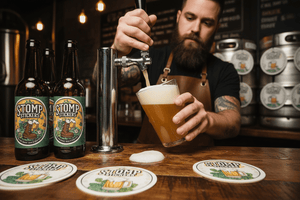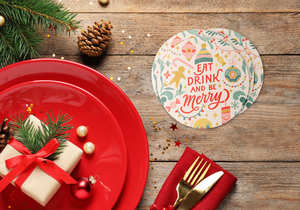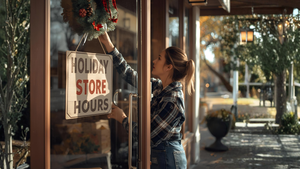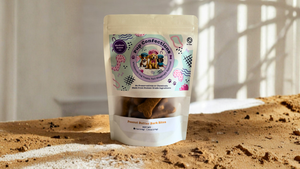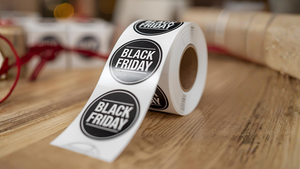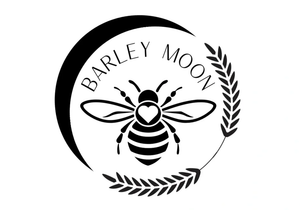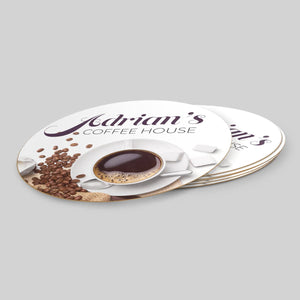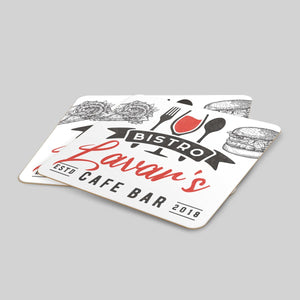History of the Drink Coaster: Who Designed It & Why?

Drink coasters are commonplace yet critical items within every bar and restaurant. I mean, have you ever slightly died inside when you saw those watermarks on your table? Also called coasters, beverage coasters, or beermats, drink coasters are primarily used to protect table surfaces. Placed on top, drink coasters can protect beverages from flies or demonstrate that the patron is still consuming them.
Globally, consumers go through billions of drink coasters every year. And while drink coasters are a practical necessity, they have also become in-demand collectors’ items that are bought and sold on platforms like eBay. But where exactly did the drink coaster originate? How did they become so popular? Did you know you can collect them?
In this post, we will discuss the history of drink coasters, who designed them, and how they can be a great marketing tool for businesses. So let’s go back in time to the early days!
Why are Drink Coasters Called Coasters?
The word “coaster” came from a ship in the 1570s that traded between ports along a coast. By 1874, a "low, round tray" used to hold a wine bottle and serve as a decanter was referred to as a “bottle coaster.”
What is the Purpose of a Coaster?
While drink coasters serve multiple purposes, their main function is to protect surfaces from the condensation of the drink placed on them. For example, if a cold drink is placed on a wooden or leather surface, water from the condensation of the drink may damage the material, leaving a circular ring. For this reason, coasters are not just a great resource to promote your brand, but to preserve your countertops.

Who Invented the Drink Coaster?
The drink coaster is found throughout the world, but it has its origins in Europe. Until about 1760, drink coasters were considered uncommon and used primarily under wine decanters. They were typically made out of silver, paper mâché, ceramics, glass, or wood and enabled the wine to be passed around the table more easily once the servants retired.
As for beer, that was a bit different. Wealthy people used Steinkrugs (“beer steins”) which had lids on them, preventing spills and things like bugs and dirt from getting inside. However, most people during those historical periods did not have access to such fancy items—so, they would head to the pubs for their beverages and drink out of an open cup. Instead of lids, the pubs would use felt or pieces of fabric as a drink cover. But these fabrics, which would get wet and dirty were often reused -- not particularly sanitary. Pubs realized they needed an alternative and they needed it fast.
It is difficult to exactly pin down the “inventor” of the drink coaster, but several Germans often get credit. In the 1880s, the German printing company Friedrich Horn started making disposable drink coasters that were made out of cardboard. Yet, a few years later, in 1892, Robert Sputh of Dresden, is also credited with inventing the drink coaster.
Sputh patented the process of pouring liquid wood pulp into a mold and letting it dry out completely. His version was made out of the steadier paper pulp, a byproduct of the wood industry. After Sputh patented this process, Casimir Otto Katz of Murgtal came upon Sputh’s innovative process of the molded pulp drip mat that reused waste generated by his pulp mill and improved the production design. By 1903, the Katz Group started mass producing the modern drink coasters. During their prime, the Katz Group produced about 5 to 7 billion drink coasters per day.
Now made out of the paper pulp, the drink coaster was made for a fairly simple reason—to absorb the condensation drips from the glass and any overflowing beer. Today’s drink coasters are also made out of soapstone, metal, wood, copper, and silicone. Manufacturers will also print labels on coasters to advertise for a certain beer or brewing company, restaurant, business, sports team, or special event.
Beermats vs. Coasters? Why the Name Change
Originally called bierdeckels (translation “beer mat” or more accurately “beer lid” in German), drink coasters kept that name in places like the United Kingdom.
The United Kingdom was introduced to beer mats in the early half of the 20th century. In 1920, Watney Brewery introduced drink coasters in the United Kingdom as a way to advertise their ale by printing their logo on them. Other breweries started producing their own and to this day, drink coasters are still referred to as beer mats in the U.K. and Australia.
However, in the U.S. the term beer mats eventually changed to drink coaster in 1913. During this time, the soda industry was taking off, so it was more practical to refer to these items as a universal “drink coaster” rather than referring to a specific beverage in the “beer mat.”
When Did Drink Coasters Become So Popular?
Drink coasters took a while to gain popularity in the U.S. Some of the earlier (and more memorable) coasters came from Piels Beer. During the 1940s, Piel’s of Brooklyn, New York started printing cartoon characters holding up a glass of beer on their drink coasters and later included conversations between the characters. Even special events had drink coasters made— the New Ballantine Inn at the 1939 World’s Fair had drink coasters printed to celebrate the occasion that could be personalized, stamped, and mailed to friends. While many of their designs would not be appropriate in today’s marketing world, they set the standard at the time for unique drink coasters.
Despite the early start, drink coasters took a while to become mainstream in the U.S. By 1979, the Katz Group had expanded its operations into the U.S. by creating coasters for the mega beverage conglomerates such as Coors, Dos Equis, and Heineken and could be mass-produced. Then, Coaster Factory and Canada Coaster, both based in North America, entered the drink coaster production industry.
Fast forward to now, close to 5.5 billion drink coastersare produced annually in North America and Europe, and the industry shows no signs of slowing down anytime soon.

The Advent of Tegestology and Coaster Marketing
The art of collecting drink coasters is properly known as tegestology, especially amongst the more sophisticated aficionados. While the art of Tegestology is not well-known (although it would make an excellent trivia question!), it is a serious hobby to collect drink coasters from around the world. According to the Guinness Book of World Records, Leo Pisker of Langenzersdorf, Austria, collected over 150,000 different beer coasters from over 192 countries!
While collecting custom coasters is a popular activity, advertising on coasters is a great way for companies to advertise a certain beverage, their establishment, or an event. They can be made from a variety of materials and can be customized to the purchaser’s needs. Bars and restaurants can even purchase reusable drink coasters and those made from recycled materials. Amazingly, drink coasters have been used as an advertising tool for over 100 years and are still going strong.
Using drink coasters as a marketing tool is an inexpensive, effective, and fun way for businesses to reach potential customers and re-engage with old ones. For bars and restaurants, servers will often place a coaster underneath a patron’s glass, usually bearing the logo of the establishment or the promoted drink on tap. In doing so, customers see the drink coaster every time they take a sip of their beverage.
Events can use coasters as well to promote a brand, product, or promotions. During an event, patrons are having a blast when they interact with drink coasters, leading them to associate the brand with the fun. Businesses can also use drink coasters to enhance the experience of guests, such as printing trivia questions on them, showcasing social media accounts, a link to a fun smartphone game, or even adding QR-codes for digital menus.
Are you looking to order custom drink coasters for your business or event? Stomp has an amazing selection of designs and customization options, as well as the ability to upload one’s own design.
Create yours today or chat with our printing experts and see how easy-peasy it is to order custom coasters for your business and event. Stomp can do all the heavy lifting so you can sit back, relax, and enjoy a nice cold drink (placed on a coaster, of course)!
- Marketing Team

